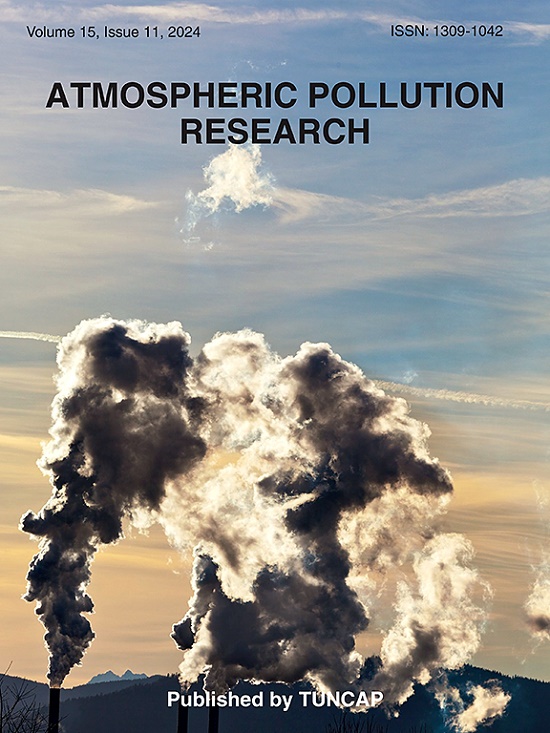Characteristics and secondary transformation potential of volatile organic compounds based on hourly variation to infer best ways to manage air quality
IF 3.9
3区 环境科学与生态学
Q2 ENVIRONMENTAL SCIENCES
引用次数: 0
Abstract
Volatile organic compounds (VOCs) concentrations vary considerably across different times and locations, making high-resolution monitoring crucial for accurately representing the formation processes of secondary pollutants. In this study, we assessed the impact of hourly concentrations of VOCs and nitrogen oxides (NOx) on ozone formation potential (OFP) and secondary organic aerosol formation potential (SOAFP) at two sites in an urban-industrialized region of Brazil. The aim was to understand the effects of VOCs on SOA formation and identify optimal strategies for controlling their environmental impacts. An analysis of the urban-industrial and suburban sites revealed significant differences in pollution patterns. The region is influenced by local anthropogenic emissions such as residential/commerce (39%), vehicular exhaust (28%), industrial processes (18%), fuel evaporation (10%), and solvent usage (3%). The ES site showed higher and more varied VOC concentrations, elevated NOx, and distinct ozone production dynamics indicative of a VOC-limited regime. In contrast, the MO site exhibited lower VOC levels, suggesting a suburban pattern mainly influenced by aged air masses. Key VOCs like trimethylbenzene isomers and ethylbenzene dominate OFP calculated by measured VOCs (OFPM) at the ES site, while a more even distribution among VOC species is observed at MO. SOAFP analysis highlights substantial contributions from benzene and ethylbenzene at both sites, with ES showing a closer match between SOAFP and measured PM2.5 concentrations. The findings emphasize the necessity for site-specific air quality management strategies targeting major VOC contributors to effectively reduce ozone and PM2.5 levels, thereby improving environmental health outcomes.
求助全文
约1分钟内获得全文
求助全文
来源期刊

Atmospheric Pollution Research
ENVIRONMENTAL SCIENCES-
CiteScore
8.30
自引率
6.70%
发文量
256
审稿时长
36 days
期刊介绍:
Atmospheric Pollution Research (APR) is an international journal designed for the publication of articles on air pollution. Papers should present novel experimental results, theory and modeling of air pollution on local, regional, or global scales. Areas covered are research on inorganic, organic, and persistent organic air pollutants, air quality monitoring, air quality management, atmospheric dispersion and transport, air-surface (soil, water, and vegetation) exchange of pollutants, dry and wet deposition, indoor air quality, exposure assessment, health effects, satellite measurements, natural emissions, atmospheric chemistry, greenhouse gases, and effects on climate change.
 求助内容:
求助内容: 应助结果提醒方式:
应助结果提醒方式:


